#soltsy-2
Text
EXCELLENT! 👍🏼 🇺🇦 The only way to end the war for good will be with Putin's defeat.
A flagship Russian long-range bomber has been destroyed in a Ukrainian drone strike, according to reports.
Images posted on social media and analysed by BBC Verify show a Tupolev Tu-22 on fire at Soltsy-2 airbase, south of St Petersburg.
Ukraine had not been very active in that region. Soltsy is 124 miles/200 km south of Putin's hometown St. Petersburg.
The Kremlin is pretending that this is not a big deal.
Moscow said that a drone was hit by small-arms fire but managed to "damage" a plane. Ukraine has not commented.
The Tu-22 can travel at twice the speed of sound and has been used extensively by Russia to attack cities in Ukraine.
[ ... ]
It stated the location as "a military airfield in the Novgorod region", where Soltsy-2 is situated.
"The UAV was detected by the airfield's observation outpost and was hit with small-arms fire," the ministry said.
The point is to make the Kremlin feel insecure and cause the Russian military to divert resources to protecting locations which were previously thought to be immune to attack. Soltsy-2 is about 620 km from Ukraine.
The location of this attack is directly related to Russia's terrorist attacks on Ukrainian civilians.
The Tu-22 is a Cold War-era, swing-wing supersonic bomber, codenamed "Backfire" by Nato, which has been used extensively in attacks on Ukrainian cities.
Modern versions such as the Tu-22M3 can reach speeds of Mach 2 (2,300km/h or 1,430mp/h) and can carry up to 24,000kg of weapons, including "dumb bombs" and homing missiles.
They have been used in conflicts in Syria, Chechnya, and Georgia and most recently in Ukraine.
According to prosecutors in Kyiv, 30 people were killed when a Tu-22-launched missile hit a block of flats in Dnipro in January.
There is now one fewer Tu-22 (possibly two according to other reports) which can bomb Ukrainian maternity hospitals, schools, apartment buildings, and blood transfusion centers.
Russia is losing the war – but not fast enough. Give Ukraine whatever military hardware and weapons it needs except nukes.
The bottom line is that Russia has no fucking business in Ukraine. That's all anybody needs to know about this conflict.
#invasion of ukraine#ukrainian drones#russia#soltsy-2#tu-22#backfire bomber#russia is losing the war#vladimir putin#сольцы#ту-22#россия - террористическая страна#владимир путин#путин хуйло#добей путина#путлер#союз постсоветских клептократических ватников#россия проигрывает войну#руки прочь от украины!#геть з україни#йдемо на ви#вторгнення оркостану в україну#україна переможе#слава україні!#героям слава!
12 notes
·
View notes
Text



Nehéz elhinni de úgy tűnik igaz: tegnap az ukránok sikeres dróntámadást hajtottak végre a határtól 650km-re fekvő ruszki Soltsy-2 légitámaszpont ellen; a jelentések szerint 2 Tu22M3 hadászati bombázó repülőgép "megsérült", hát ez eléggé sérültnek tűnik. (wiki szerint 93 aktív gép létezett ebből, tegnapig)
33 notes
·
View notes
Text

Russia still has 27 Tu-22M bombers in airworthiness conditions, said Ukrainian leader
Fernando Valduga By Fernando Valduga 08/24/2023 - 1:00 p.m. in Military, War Zones
After recent drone attacks on Russian airfields in Soltsy and Shaykovka, Moscow now has no more than 27 Tu-22M3 operational strategic bombers at its disposal, said the head of Ukrainian Defense Intelligence.
Kyrylo Budanov said in an interview with RFE/RL on August 23 that a total of 436 Russian aircraft are involved in the military campaign against Ukraine.

"That's a lot; but if you ask how many of them are Tu-22, it will be just a few," he said.
"They had about 31 Tu-22 in operation, now - 29, and two less that will need repairs, that is, 27. Therefore, there are not many who can really fly."

A side-by-side comparison of Planet Labs satellite images taken on August 21 (above) and August 16 (below) shows not only the damaged Backfire, but that at least nine others have been moved since then. (Photo: 2023 PLANET LABS INC)
He also reported that as a result of operations in Soltsy and Shaykovka, two aircraft were completely destroyed, while two others were damaged. Budanov noted that the damaged aircraft would eventually be repaired. Russia no longer produces Soviet-era Tu-22 aircraft.
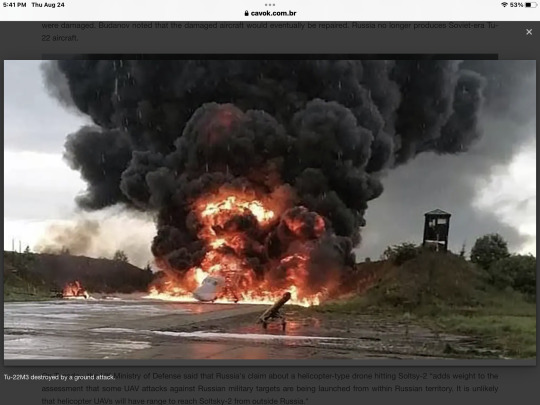
Tu-22M3 destroyed by a ground attack.
The head of the intelligence agency said that the attacks were carried out by "individuals who performed certain tasks in the territory of the Russian Federation".
On Tuesday, the UK Ministry of Defense said that Russia's claim about a helicopter-type drone hitting Soltsy-2 “adds weight to the assessment that some UAV attacks against Russian military targets are being launched from within Russian territory. It is unlikely that helicopter UAVs will have range to reach Soltsky-2 from outside Russia."
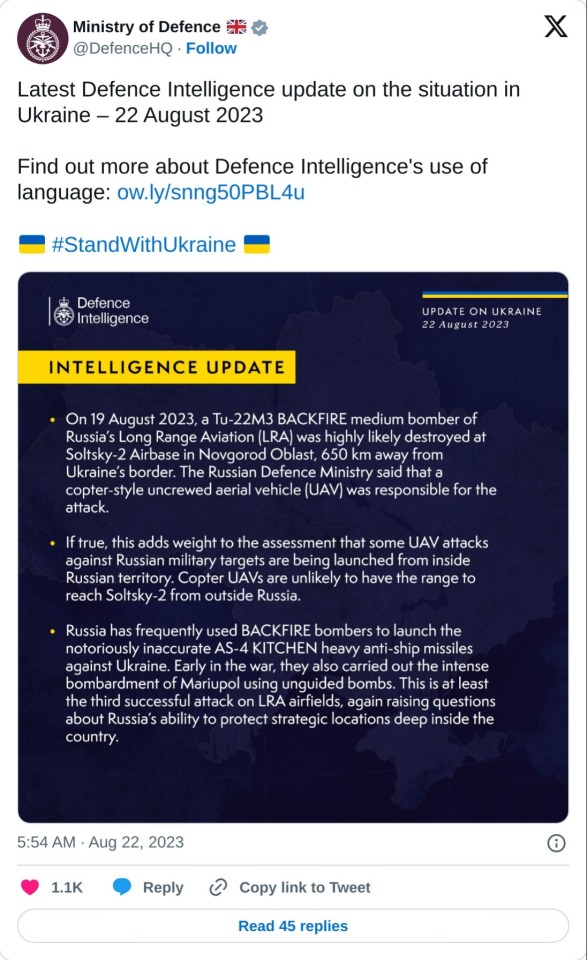
“This is at least the third successful attack on LRA [Long Range Aviation] airfields, again raising questions about Russia's ability to protect strategic locations within the country,” the UK Ministry of Defense added.
Tags: Military AviationRFSAF - Russian Federation Aerospace Force/Russian Aerospace ForceTupolev Tu-22M3 BackfireWar Zones - Russia/Ukraine
Sharing
tweet
Fernando Valduga
Fernando Valduga
Aviation photographer and pilot since 1992, he has participated in several events and air operations, such as Cruzex, AirVenture, Daytona Airshow and FIDAE. He has work published in specialized aviation magazines in Brazil and abroad. Uses Canon equipment during his photographic work throughout the world of aviation.
Related news
Ukrainian military intelligence attracted a Russian helicopter pilot to desert with his Mi-8AMTSh helicopter that was carrying a cargo of spare parts for Su-27 and Su-35 fighters to an air base. The helicopter is seen here in a field near Kharkov.
MILITARY
Russian Mi-8 helicopter pilot deserted to Ukraine in pre-planned operation
08/24/2023 - 16:00
MILITARY
Chinese Air Force demonstrates drone team with manned combat jets
08/24/2023 - 14:00
MILITARY
F-16 fighters from Taiwan will receive IRST
08/24/2023 - 11:00
An image posted on the Air Force Facebook page amn/nco/snco depicts a ground emergency involving an F-16 fighter that occurred at Misawa Air Base in Japan on August 17. No one was injured in the accident. (Photo via Facebook /Air Force amn/nco/snco)
AIRCRAFT ACCIDENTS
USAF F-16 ground accident in Japan is under investigation
08/24/2023 - 09:00
MILITARY
Iran would be developing an unmanned version of the Qaher-313
08/24/2023 - 08:23
BRAZIL
IMAGES: FAB celebrates 40 years of support for the Brazilian Antarctic Program
08/24/2023 - 08:10
homeMain PageEditorialsINFORMATIONeventsCooperateSpecialitiesadvertiseabout
Cavok Brazil - Digital Tchê Web Creation
Commercial
Executive
Helicopters
HISTORY
Military
Brazilian Air Force
Space
Specialities
Cavok Brazil - Digital Tchê Web Creation
4 notes
·
View notes
Text

UPDATE: Evolving information seems to indicate that multiple RU Tu-23M strategic bombers and stored missiles may have been destroyed during the raid. A salient thread from
@TrentTelenko:
DEEP STRIKE: A quad-copter UAV has conducted a strike mission against the strategic airbase at Soltsi air field in the Novgorod region of Russia.
Tu-22M3 strategic bombers are based at Soltsi; these aircraft are routinely used in attacks on Ukraine. https://t.me/operativnoZSU/110735


REPORTED ABOUT 2 BURNING AIRCRAFTS

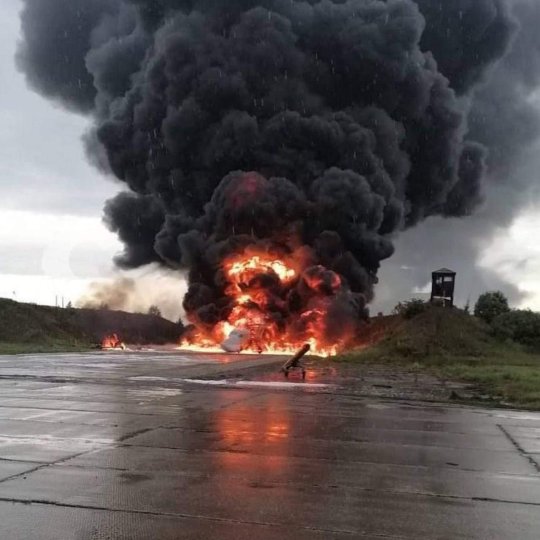
While some media sources are claiming that either Tu-22m3 or a fuel depot were hit.
The smoke rising from is the wrong color for that.
Burning jet fuel is black. The smoke rising from the VKS Soltsi military airfield isn't black.
What's burning? 2/7 https://en.defence-ua.com/events/a_drone
The answer is a bunch of these.
These are Kh-22 (or X-22) anti-ship cruise missiles used on Cold War Backfire bomber to hunt USN Carriers.
Their warheads use the plastic explosive known as RDX.
The smoke over Soltsi military airfield is consistent with burning RDX.
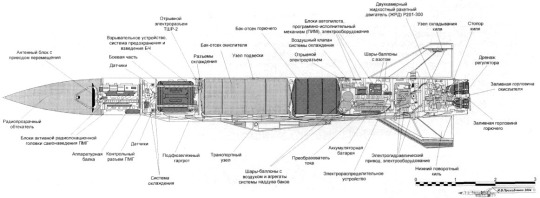

There are dozens of Kh-22 & Kh-22 sized cylinders racked in the open to the left of the close up image below - a sitting duck target.

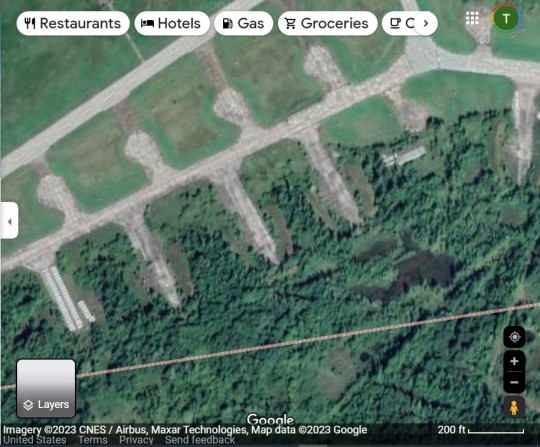
Unfuelled Kh-22 missiles were destroyed in this drone strike at Soltsi military airfield. Given a range of more than 650 km from the border with Ukraine for this strike. We are seeing a new generation of precise AFU drone munitions arriving.

0 notes
Photo

1941 08 Novgorod, Polikarpov I-16 Type 10 vs Bf109E Slacht LG2 - Carlos Alonso
I like very much this painting, the colors and the composition, but trying to identify the Messerschmitt in the background and get at least an approximate location and date has taken a lot of online searching.
The Polikarpov appears in one of Eduard Models kits, but all that is knownit's that it was a squadron hack of some fighter regiment in the
Leningrad front.
The Messer was very puzzling because of the "Mickey Mouse" insignia wielding a pistol and axe usually associated with Adolf Galland. It turns out it was not a personal marking but a holdover from his former unit, as he had flown in the Poland campaign with the Schlacht Gruppe (Battle or ground attack group) in Henschel 123 biplanes.
I was mistaken in believing the G in the SG2 abbreviation meant Geschwader, not Gruppe, and I didn't know the Henschel biplanes were just a group in a larger wing, the Lehr Geschwader. More info here:
https://asisbiz.com/luftwaffe/lg2.html
A brief summary is that this unit was meant to convert from their obsolete biplanes to dive bombers, but they ended having a couple of their Gruppen upgraded to Bf109 fighters, one a purely fighter (Jagd) and another as a fighter bomber unit, as the Germans experimented with air strikes by fighters dropping bombs.
Quoting excerpts from Hitler's Eagles: The Luftwaffe 1933–45 l by Chris McNab
By contrast, the results being achieved by the experimental Erprobungsgruppe 210 since the start of their low-level precision fighter-bomber attacks on southern England in mid-July were more than encouraging. The success of Erpr.Gr. 210's operations prompted an exasperated Göring to order that one-third of his entire Channel-based fighter force be similarly converted to carry bombs.
In the weeks and months ahead, throughout the winter -weather permitting - and into the early spring of 1941, II.(Schl)2 kept up its sporadic attacks on southern England. Flying from St Omer and Calais-Marck, the unit's targets included RAF airfields, oil refineries,railways, docks and coastal shipping. Although usually accompanied by a fighter escort - often provided by JG 27, the unit which had beenassigned to protect its Henschels in France - these operations resulted in a dozen or more combat casualties. Fortunately, some two-thirds of the pilots survived to become prisoners of war.
Of course, none of the operations flown by II.(Schl)/LG 2 during its six-month campaign against England were Schlacht missions in thetruest sense of the word - i.e. ground-attack sorties flown in direct support of the Army in the field. Yet, oddly, the (Schl) abbreviation continued to be used in the unit title. Perhaps Weiss's pilots were to have reverted to their original role once the German Army had set foot on England's shores?
In the meantime, the Gruppe had retained both a sense of individuality, and a link with the past, by applying a unique set of markings to its Bf 109s. Each machine was identified by a letter, rather than a fighter-style numeral, and each sported a large black equilateral triangle ahead of its fuselage cross. Such triangles had first been worn by the aircraft of the Fliegergruppen at the time of the Munich crisis. Their re-adoption may well have been at the instigation of Major Weiss himself, who had served as a Staffelkapitan in Werner Spielvogel's Fliegergruppe 40 during that period.
Between September 1940 and March 1941 these triangles - a few litres of black paint at most - were the only outward sign of what was now, in effect, an all but extinct ground-attack force. However, the triangle would survive to become recognized as the official symbol of the Schlacht arm, for a resurrection was about to take place. Less than a fortnight after its last Bf 109 had been lost over England (or, to be more precise, had been shot into the Channel off Dungeness) on 15 March 1941, II.(Schl)/LG 2 was given something far more tangible than mere markings to show that it was still very much in the ground-attack business - a new intake of old Hs 123s"
...
The end of 1941 also saw the end of I.(SchI)/LG 2. However, the Gruppe which had single-handedly kept the flag of the Schlacht arm flying - both figuratively and iiterally - for the past three years was being recalled to Germany not to disband, but to provide the nucleus for the first ever Schlachtgeschwader. Major Otto Weiss, who had commanded the Gruppe for almost its entire operational career, and who had been the first Schlacht pilot to receive the Knight's Cross, now became the first to be awarded the Oak Leaves on 31 December 1941 - before being appointed Geschwaderkommodore of the new unit early in January 1942.
So I knew the Lehr Geschwader, with it's mix of by now dated Bf109 Emil and obsolete biplanes fought in the invasion of the Soviet Union, in the ground attack role. Trouble is that it didn't fight in a whole wing, but the groups fought along the entire front. Until I found that book with a search, and learned that the triangle marking was specific to Schlacht units, and that the Bf109 was used in that role, I thought I was looking for a fighter unit: I.(Jagd)/LG 2, but that one fought in the South, I was thinking the artist had made a mistake.
Having a fondness for biplanes, I knew about the exploits of the Henschel 123 and that they fought in the northern part of the front, but what about the Bf109E? I had already identified the pilot by the chevron markings, of a Gruppe kommandeur ,it had to be this man:
https://en.wikipedia.org/wiki/Otto_Wei%C3%9F_%28pilot%29
But there is a gap about where the unit fought in between the first months of the invasion and the autumn, because later they moved to the Central Front and Weiss was nick-named 'Kalinin Lion' for his relentless dive bombings and low level attacks against the Soviets in the Kalinin area, northwest of Moscow, in the final offensive in the autumn before winter curtailed flying.
But did he flew in the northern part of the front or the composition is artistic license? I feared as much because for some reason the artist listed in his portfolio this beautiful picture as a reject.
Then I looked again in the asisbiz page about the Lehr Geschwader looking at the airfield locations, these are at some distance from the actual frontlines but are helpful to determine the general geographic area where the unit operated at the time.
This is what I found
Jun 1941 - Jul 1941 Praschnitz (obviously somewhere in Poland for the opening stages of Barbarossa
Jul 1941 - Sep 1941 Solzy?**
Sep 1941 - Oct 1941 Kalinin (central sector, for the final drive to Moscow)
** a number of other bases was also used, while in Russia. Names are presently unknown.
Solzy is the german spelling for this town
https://en.wikipedia.org/wiki/Soltsy
Wich is near Novgorod, so in this painting, though these airplanes and their pilots might never have met in the air, they were probably in the same general area of the front at one time in the late summer early autumn, since the artist has painted stormy skies, I chose September as the date for a painting.
Even if it's not entirely historical, the markings are accurate and have provided an entertaining research mystery and learned something new about Luftwaffe ground attack units and a lesser known ace not belonging to the fighter arm.
17 notes
·
View notes